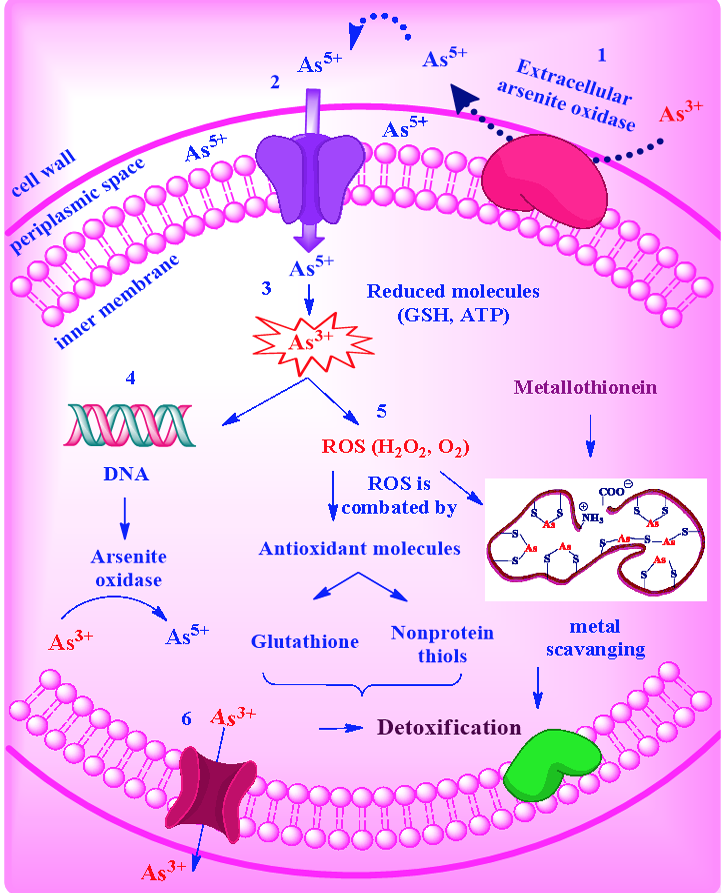Fig. 8.
Proposed As3+ resistance and oxidation mechanism in gram positive bacterium, B. cereus 3.1S. (1) As3+ oxidizes into As5+ extracellularly by arsenite oxidase. (2) As5+ enters into cell cytoplasm. (3) As5+ reduces into As3+ by reduced molecules e.g., GSH and ATP. (4) As3+ induces DNA to make arsenite oxidase which converts As3+ into As5+. (5) As3+ is also involved in the generation of ROS and the oxidative stress resulted by the formation of ROS is combated by antioxidant molecules including glutathione and non-protein thiols. Metallothionenis are involved in metal scavenging process. (6) After certain level of accumulation, As3+ expel out through the efflux system.
